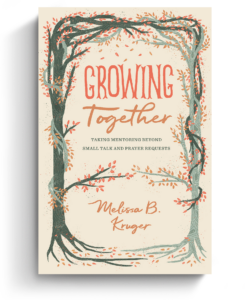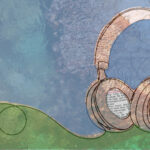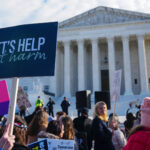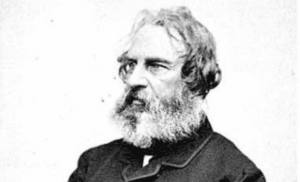Last Friday President Obama became the first sitting U.S. president to visit Hiroshima, of the two Japanese cities destroyed by nuclear weapons during World War II. At the event the president said, “We’re taking concrete steps toward a world without nuclear weapons.”
“As the only nation ever to use nuclear weapons,” he added, “the United States has a moral obligation to continue to lead the way in eliminating them.”
 Here are nine things you should know about nuclear weapons:
Here are nine things you should know about nuclear weapons:
1. A nuclear weapon is an explosive device that produces destructive energy by splitting the nucleus of an atom from material capable of sustaining a nuclear fission chain reaction. The two primary types of nuclear bombs use either fission (the process of splitting the nucleus of an atom into two or more smaller nuclei) or a two-stage process that uses fission and fusion (the process by which multiple hydrogen nuclei join together to form a heavier nucleus). Those that use fission alone are often referred to as “atomic bombs” (A-bombs) while those that use fission and fusion are called “hydrogen bombs” (H-bombs) or thermonuclear weapons. There are three types of nuclear weapons based on the material—hydrogen, plutonium, uranium—used to create the nuclear fission reaction.
2. Uranium bombs are relatively easy to design and make but require a material that is difficult to obtain: purified uranium-235. The uranium extracted from the Earth contains only 0.7 percent of the U-235 isotope, the fissile material in a nuclear bomb or nuclear reactor. The remaining 99.3 percent is mostly the U-238 isotope, which does not contribute directly to the fission process and must be removed through the process of “enrichment.” The process is difficult and expensive. About 90 percent of world enrichment capacity is in the five nuclear weapons states (see item 7). The bomb that destroyed Hiroshima was a uranium bomb.
3. Plutonium bombs are more difficult to design and make but use a material is that is easier to acquire: plutonium-239. Weapons grade plutonium can be created using a nuclear power plant. The natural uranium fuel used by the reactor can be burned for about three months to create fissile material usable in a nuclear bomb. But the process of creating a plutonium bomb requires sophisticated technology and expertise, and is far outside the capabilities of most nations, much less terrorist groups. The bomb that destroyed Nagasaki was a plutonium bomb.
4. Hydrogen bombs (thermonuclear weapons) are the most difficult to make since they require a uranium or plutonium bomb to serve as the “trigger” for the fusion reaction. They also require extensive testing to ensure that the process will work. Only six countries—China, France, India, Russia, the United Kingdom, and the United States—have conducted thermonuclear weapon tests.
5. The destructive energy of nuclear weapons, called the explosive yield, is measured in TNT equivalent, usually in kilotons (kt—thousands of tons of TNT) or megatons (Mt—millions of tons of TNT). The bomb dropped on Hiroshima was approximately 13 to 18 kt, while the bomb used on Nagasaki was 20 to 22 kt. The most powerful nuclear weapon ever detonated was Tsar Bomba, a hydrogen bomb tested by the Soviet Union in 1961. The bomb had a yield of 50,000 kt (50 Mt)—about 4,000 times more energy that the bomb used on Hiroshima—and had a destructive radius of 15 miles. (You can see a video of the testing here.) The largest nuclear weapon currently in the U.S. stockpile, the B83, has a yield of 1,200 kt (1.2 Mt).
6. Apart from the explosive yield, much of the danger of nuclear weapons comes from radioactive fallout. Radioactive material can attach itself to dirt and other debris during the explosion and settle over a broad area. For survivors of a nuclear blast, this radiation hazard could pose a danger for months or years after the attack. In the 1950, fallout shelters were created throughout the United States to provide shelter after an attack. Although they would not provide protection from a direct hit, fallout shelters would allow people to escape exposure while the short-lived radiation expended itself.
7. The Treaty on the Non-Proliferation of Nuclear Weapons of 1970 (aka the Non-Proliferation Treaty or NPT) recognizes five states as nuclear-weapon states: the United States, Russia, the United Kingdom, France, and China (these are also, not coincidently, the five permanent members of the United Nations Security Council). India and Pakistan have also tested nuclear devices. Israel is believed to have nuclear weapons, though they have never admitted to it or tested them. North Korea is believed to have nuclear bombs but no missiles that can deliver them.
8. The U.S. Defense Department maintains about 4,760 nuclear warheads, according to estimates by the Bulletin of the Atomic Scientists. Of this number, they estimate that approximately 2,080 warheads are deployed while 2,680 warheads are in storage. In addition to the warheads in the Defense Department stockpile, approximately 2,340 retired but still intact warheads are in storage under the custody of the Energy Department and awaiting dismantlement, for a total US inventory of roughly 7,100 warheads.
9. As the commander in chief of the U.S. armed forces, the president maintains sole authority to authorize the launch of nuclear weapons. Military doctrine recommends that the president consult with senior commanders in making a decision to employ nuclear weapons, but he is not bound to do so. The president is accompanied at all times by a military officer carrying a briefcase that contains a secure satellite communication radio and handset, the nuclear launch codes known as the “Gold Codes,” and the President’s Decision Book on options for using nuclear weapons. This briefcase is officially known as the “president’s emergency satchel,” but it is often referred to as the “football.” (According to Smithsonian Magazine, it acquired its name from an early nuclear war plan code-named “Dropkick.” “Dropkick” needed a “football” in order to be put into effect.) The president carries a personal identification code—called “the biscuit”—which is needed to confirm nuclear launches. (Bill Clinton reportedly misplaced his “biscuit” for several months while in office.)
Additional source: Additional background material was used from Richard A. Muller’s Physics for Future Presidents.
Involved in Women’s Ministry? Add This to Your Discipleship Tool Kit.
 We need one another. Yet we don’t always know how to develop deep relationships to help us grow in the Christian life. Younger believers benefit from the guidance and wisdom of more mature saints as their faith deepens. But too often, potential mentors lack clarity and training on how to engage in discipling those they can influence.
We need one another. Yet we don’t always know how to develop deep relationships to help us grow in the Christian life. Younger believers benefit from the guidance and wisdom of more mature saints as their faith deepens. But too often, potential mentors lack clarity and training on how to engage in discipling those they can influence.
Whether you’re longing to find a spiritual mentor or hoping to serve as a guide for someone else, we have a FREE resource to encourage and equip you. In Growing Together: Taking Mentoring Beyond Small Talk and Prayer Requests, Melissa Kruger, TGC’s vice president of discipleship programming, offers encouraging lessons to guide conversations that promote spiritual growth in both the mentee and mentor.

































